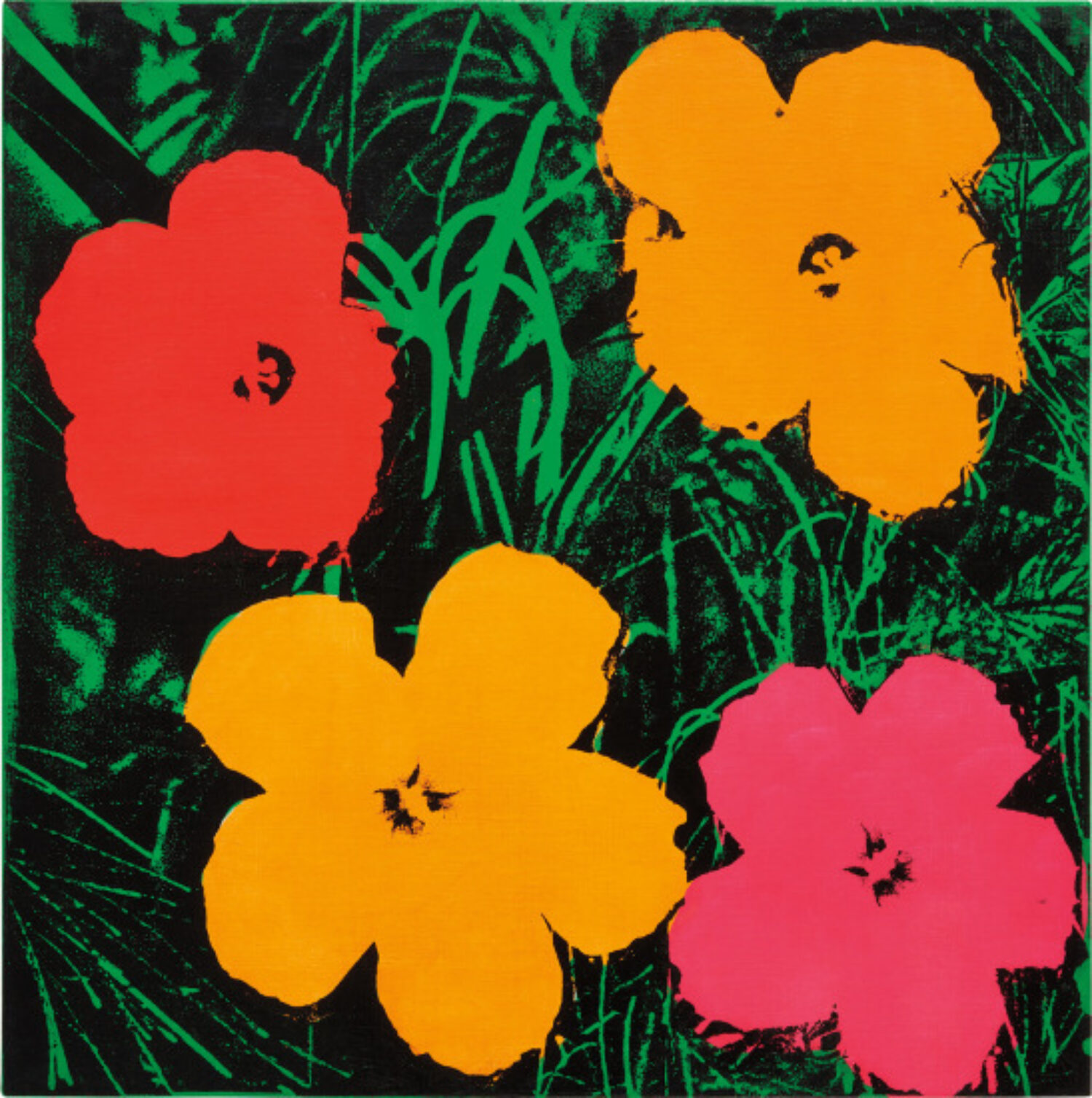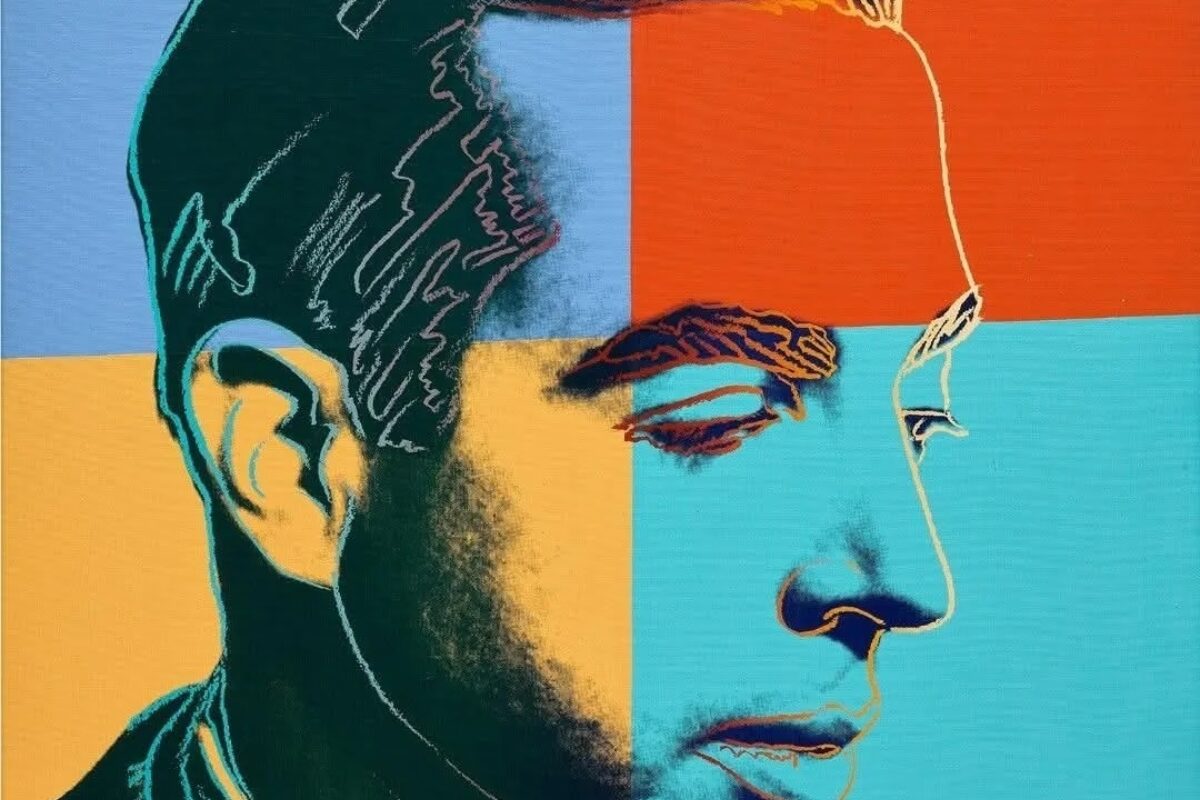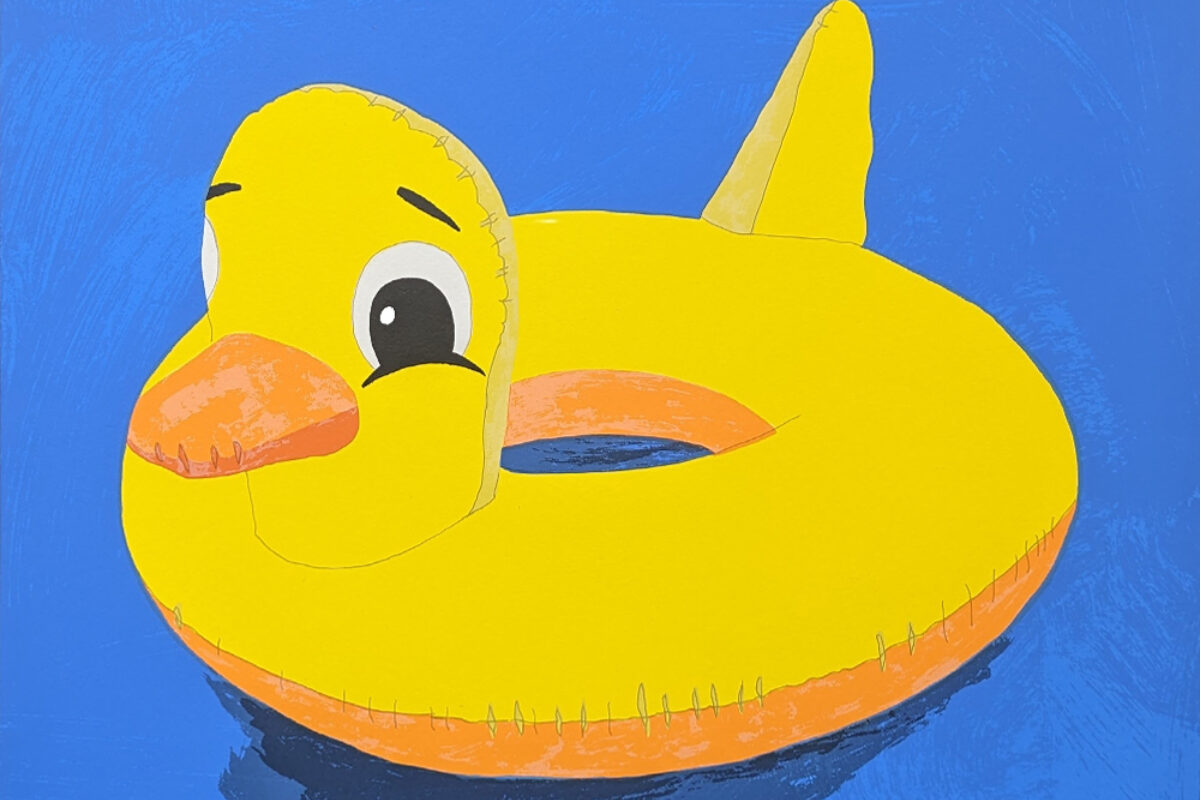
Andy Warhol played a pivotal role in elevating screen printing from a commercial technique to a respected artistic medium. His innovative use of the process allowed him to explore themes of mass production, celebrity culture, and consumerism, which became hallmarks of the Pop Art movement. By repetitively reproducing iconic images, Warhol challenged traditional ideas of artistic originality and authenticity. His bold, vivid works, such as the Marilyn Monroe series and Campbell’s Soup Cans, showcased the potential of screen printing to create striking, impactful art. Warhol’s contributions significantly broadened the scope and perception of screen printing, cementing its importance in contemporary art.

Andy Warhol, Flowers
Sign up for artist updates
Receive Warhol UpdatesA Brief History of Screenprinting
Screenprinting, an ancient art form originating in China around AD 950, was initially used to print patterns on fabric and later adopted by Japanese artisans for paper and fabric using human hair mesh. It reached Europe in the 18th century but gained popularity only after silk became more affordable through the Silk Road. By the early 20th century, photo-sensitised emulsions revolutionised stencil creation, leading to its use as an artistic medium in the 1930s, termed 'serigraphy.' Artists like Andy Warhol popularised screen printing in the 1960s for creating multiple image copies, exemplified by Warhol's Marilyn Diptych. Today, screenprinting serves both artistic and commercial purposes, efficiently producing large quantities of custom designs.

Screenprinting Screen
The Process of Screenprinting
Step 1: The design is created
The printer prints the design onto a transparent acetate film. This will be used to create the stencil.
Step 2: The screen is prepared
The mesh screen is then coated with a layer of light-reactive emulsion, which will harden when developed under bright light.
Step 3: The emulsion is exposed
The acetate sheet featuring the design is then laid onto the emulsion-coated screen, and the whole thing is exposed to a very bright light. The light hardens the emulsion, so the parts of the screen which are covered by the design remain in liquid form.
Step 4: The emulsion is washed off, creating the stencil
Any unhardened emulsion is then carefully rinsed away. This leaves a clear imprint of the design on the screen for the ink to pass through.
The screen is then dried, and the printer will make any necessary touch-ups or corrections.
Step 5: The paper is readied for printing
The screen is then placed on the printing press. The paper (or other material being printed) is laid down flat onto the printing board, underneath the screen.
There are a number of different presses, including manual and automatic styles.
Step 6: The ink is pressed through the screen
The screen is lowered down onto the printing board. Ink is added to the top end of the screen, and a squeegee is used to pull the ink along the full length of the screen. This presses the ink through the open areas of the stencil, imprinting the design on the material underneath.
Step 7: The work is dried, checked and finished
The printed product then passes through a dryer, which 'cures' the ink and creates a smooth, colourfast finish.
Step 8: The process is repeated for additional colours
If the final design is going to include more than one colour, then a separate screen must be used to apply each layer of ink.
Other Artists Utilising Screenprinting
Madeleine White
Senior Sales and Acquisitions
More editorials about Andy Warhol
Artists
Happy Birthday Andy Warhol, The King of Pop Art
6 Aug 2025

Art Market
The Hang | Your monthly round up of Art Market based News
31 Jul 2025 | 4 min read

Artists
Top 10 Selling Warhol Sets
15 Jun 2025 | 2 min read

Art Market
Warhol's Star Portraiture Proves Successful at Auction
29 May 2025 | 3 min read

Art Market
Warhol's Market Remains Robust
6 Mar 2025 | 3 min read

Art Market
Market Watch: Auction highlights | RESULTS
3 Mar 2025 | 2 min read

Collecting Guides
Art Decoded: Screenprinting
7 Jan 2025 | 3 min read

Art Market
12 Moments of 2024
30 Dec 2024
Artists
Artist Decoded: Andy Warhol's Notable Series
11 Dec 2024 | 7 min read

More from Collecting Guides
Art Market
The Summer Window: 5 Reasons Why Summer is the Best Time to Buy Art
22 Jul 2025

Artists
Top 10 Selling Warhol Sets
15 Jun 2025 | 2 min read

Collecting Guides
Art Decoded: Screenprinting
7 Jan 2025 | 3 min read

Collecting Guides
How To | Gift Art
5 Dec 2024

Collecting Guides
How To | Buy Art from A Gallery
16 Jun 2023

Art Market
Sell Art | Five Reasons Why Galleries Are the Ideal Choice for Selling Art
24 May 2023 | 4 min read

Artists
The Lowdown on Investment: Tracey Emin
4 May 2023 | 8 min read
Collecting Guides
How To | Use Own Art at Hang-Up Gallery
10 Mar 2023 | 1 min read
Collecting Guides
How To | Pack Your Art
8 Aug 2022






